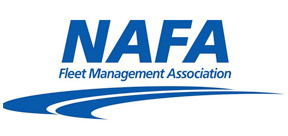Lake County, Park City, IL., undertakes efforts to reduce flooding

Park City, IL., is celebrating a long-awaited stormwater project designed to save homes and property in the flood-plagued city north of Chicago.
The municipality of about 7,800 residents sits at the headwaters of the 20-mile-long Skokie River in Lake County, which runs parallel to Lake Michigan in the farthest northeast corner of Illinois. More than two-thirds of the city’s residents live in manufactured homes and apartments.
Only 1.19 square miles in size, the small community has been hard-hit by stormwater flooding in recent years, resulting in millions of dollars in damage to property. As recently as the summer of 2024, main roadways such as Washington Street and Illinois Route 120 have been closed because of floodwaters. The road closures impact both residents and commuters, especially with Park City being located at the northern end of the Chicago metropolitan area between the village of Gurnee, Ill., on the west and the city of Waukegan, Ill., to the east. Illinois Route 41 carries traffic south to Chicago and north into Wisconsin. All are important to the life of Lake County residents.
Washington Street, a major east-west artery, has been closed eight times in the last six years. In July 2017, a major flooding event closed the street for two days and did structural damage to more than 20 homes and businesses.
Kenneth Magnus, the city engineer, said this first part of a three-part project was aimed at preventing flooding on the east side of the city. “Flooding has been a constant nuisance in that area.”
The project was started in late fall of 2023 and was 95% finished as of the end of July 2024. “We expect paving to be completed in early August,” he added.

“The stormwater problems were a combination of undersized storm sewers, undersized infrastructure and increased rainfall in recent years,” said Kurt Woolford, Stormwater Management Commission Executive Director, at a June ribbon-cutting marking the near completion of the project.
Like many cities around the country, climate change has added to issues created by aging infrastructure. “Increasing rain levels in our area have broken records and caused millions of dollars in damage to properties,” Woolford added. The 2017 flood affected about 25% of the city’s population and was one of the worst in Lake County history.
To increase the stormwater capacity, underground box culverts were installed along with storm sewer upgrades and the replacement of a stormwater system restrictor plate to modernize a system that had been in place since the 1970s. According to Woolford, this has increased the stormwater capacity by two and a half times.
While the project extended less than two miles, the effect of its improvements will reach much further downstream. Not only will Park City and the adjacent city of Waukegan see its benefits, but Woolford pointed out that cities and states all the way south to the Gulf of Mexico will benefit from the increased drainage capacity. In addition to flooding, the toxic chemicals in runoff from construction and industrial sites as well as farms affect the quality of life along the watershed.
The project was identified in 2020 as the number one priority in Lake County with the allocation of funding for 14 stormwater management projects in Park City and adjoining communities, including Antioch, Grayslake, Highland Park, Warren Township and Waukegan. It is expected to benefit 2,300 properties and 25 roadways in the county. Park City contributed more than $42,000 to the project.
Funded by the Department of Commerce and Economic Opportunity, Lake County will receive a total of $122 million from a state of Illinois appropriation to assist in projects that will help with managing regional stormwater and related infrastructure maintenance and improvement projects throughout the county.
Magnus said future projects will provide for increased conveyance of stormwater runoff as well as upgrades to the current infrastructure and storage capacity. The largest section of the three-part project will be funded by a Federal Emergency Management Agency grant and is expected to begin later this year. Among the future plans, Magnus said that the wetlands in the Greenbelt Forest Preserve will include native plantings and educational areas to help residents understand the methods and value of stormwater management both locally and globally.
Next Article: Leaving a lifeline: Vancouver Fire Department distribute overdose prevention kits



